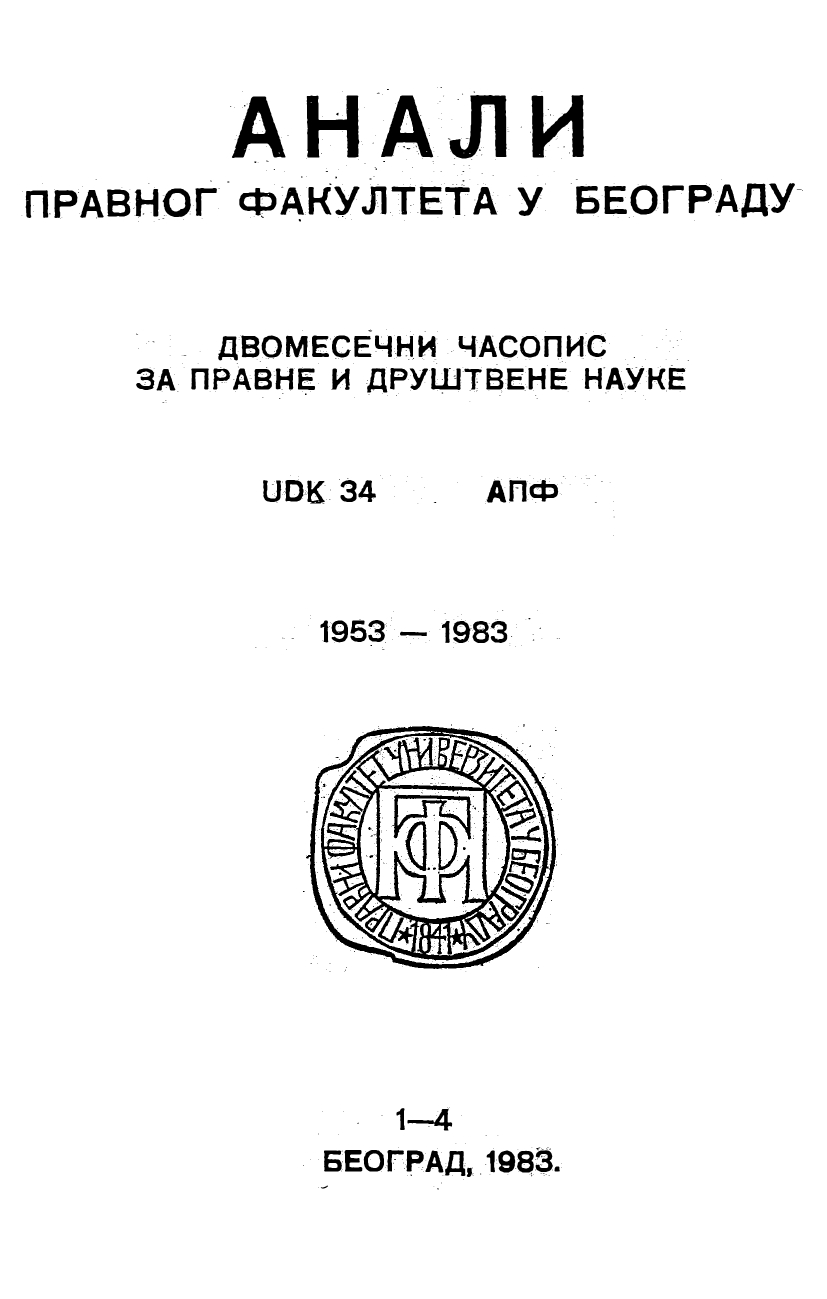КЛАСИЧАН СИСТЕМ ИЗВРШЕЊА КАЗНЕ ЛИШЕЊА СЛОБОДЕ
THE CLASSICAL SYSTEM OF EXECUTION OF PUNISHMENT OF DETENTION IN CUSTODY
Author(s): Đorđe M. IgnjatovićSubject(s): Law, Constitution, Jurisprudence, Criminal Law
Published by: Правни факултет Универзитета у Београду
Summary/Abstract: The main thesis discussed in this essay is that the institution of the execution of punishment (sentence) of detention in custody has gone through two periods of its development since its introduction into the register of criminal sanctions — the classical and the modern periods. The subject of this essay is the classical system, which we have so designated not only because it emerged and developed under the dominant influence of the classical and neo-classical schools of criminal law, but also because the term „classical” points to its obsoleteness in contemporary conditions. In this sphere, the classical school has led to the development of the concepts of repression and retributive justice, which has set this form of punishment (sentence) the task of liberating and protecting the society from the criminal by imposing stringent isolation, forcing him to atone for his criminal acts, as well as intimidate the potential delinquents. This concept has been dominant from the birth of the punishment of detention in custody, in the form of cell detention or the system of isolation in its variant forms — solitary confinement and the system of reticence (silence). Yet in the more progressive system, in the English and Irish variant, we encounter, in their initial stage, ideas which shall become dominant in the modem system: an aspiration to reform the convict, and an individualised and merciful attitude toward him. However, in that very act, the desire of' the progressive system to simultaneously achieve with one single measure — punishment or sentence — both the atonement and the reformation of character, lies one of the most significant objections made against this system — in its desire to achieve two adverse aims, it risks to achieve neither one of them. The classical system has been dominant in a majority of countries until after the Second World War. Then, under the impact of the failure to achieve results in its struggle with criminality, the critical theory of the New Social Defence, the activities on the OUN the international scene, and the spirit of the recognition of freedom and human rights after victory over the totalitarian fascist- of regimes, the modem system began its domination. But, it is still necessary to study the classical system of execution for not only has it remained in domination in many countries, but also a number of countries adopting the modem system, have setained characteristics of the classical system. So, if we really want the modern system to become prevalent, it is necessary to gradually eliminate the remains of the classical system, which means the necessity of understanding its essential features and scope.
Journal: Анали Правног факултета у Београду
- Issue Year: 31/1983
- Issue No: 1-4
- Page Range: 344-356
- Page Count: 13
- Language: Serbian

